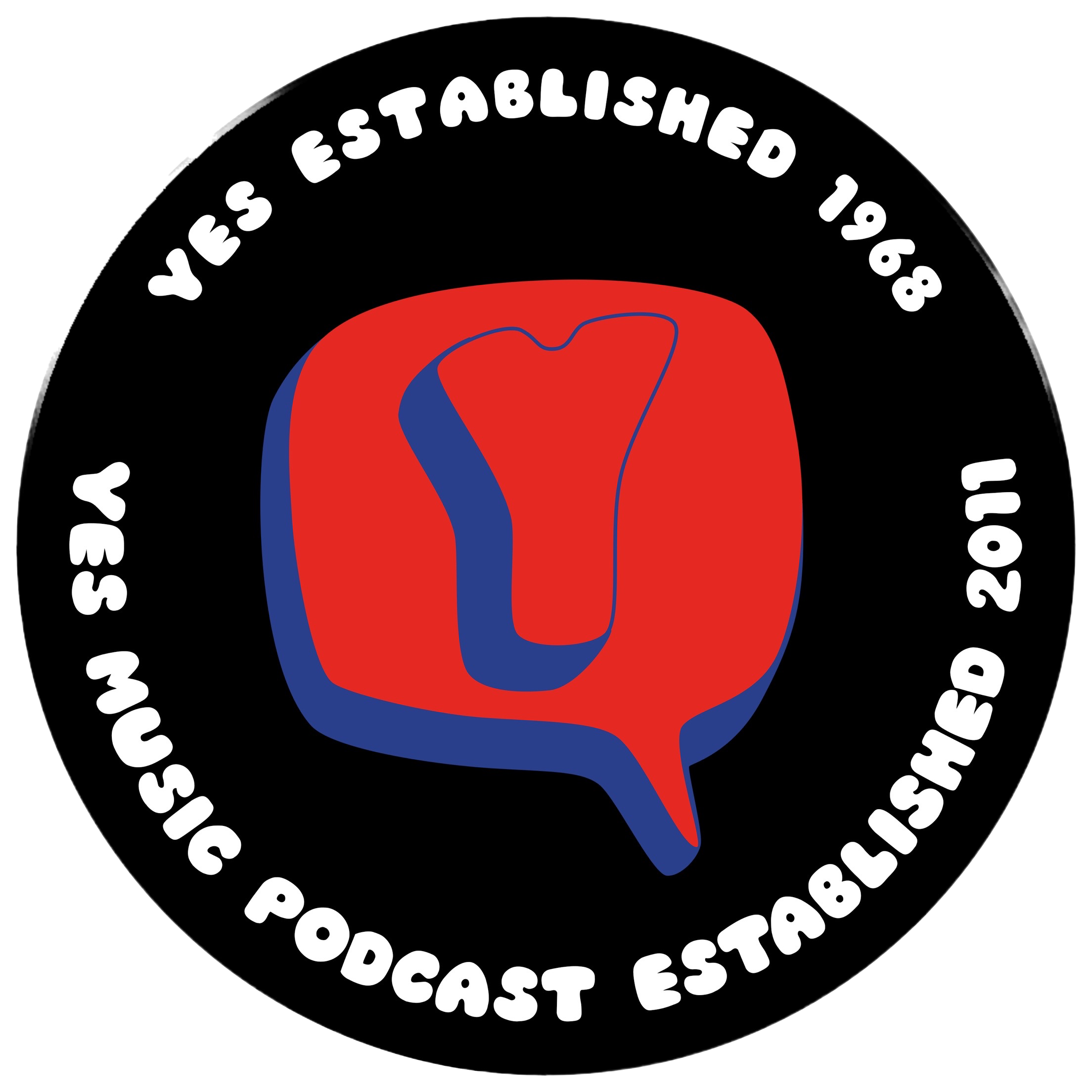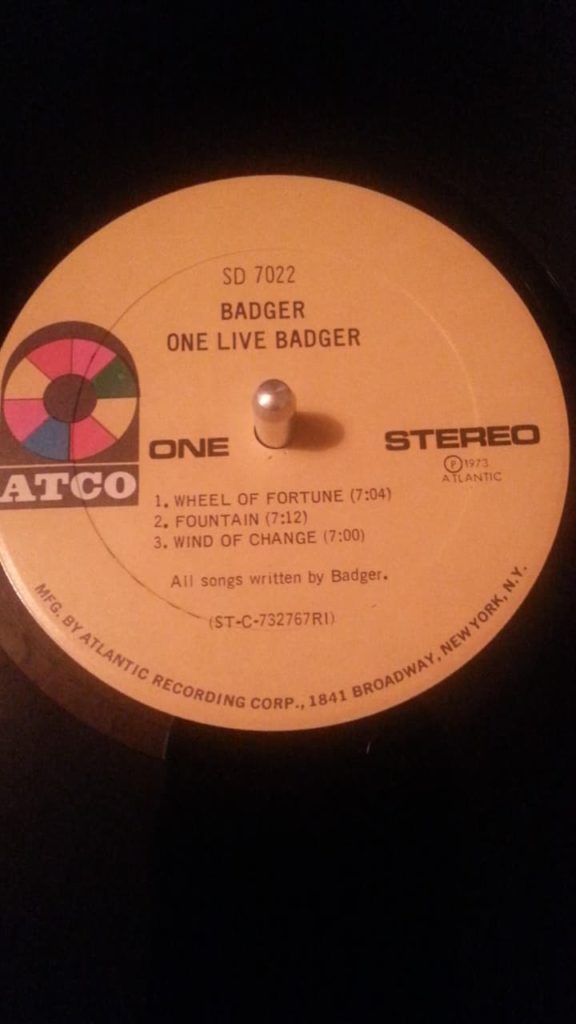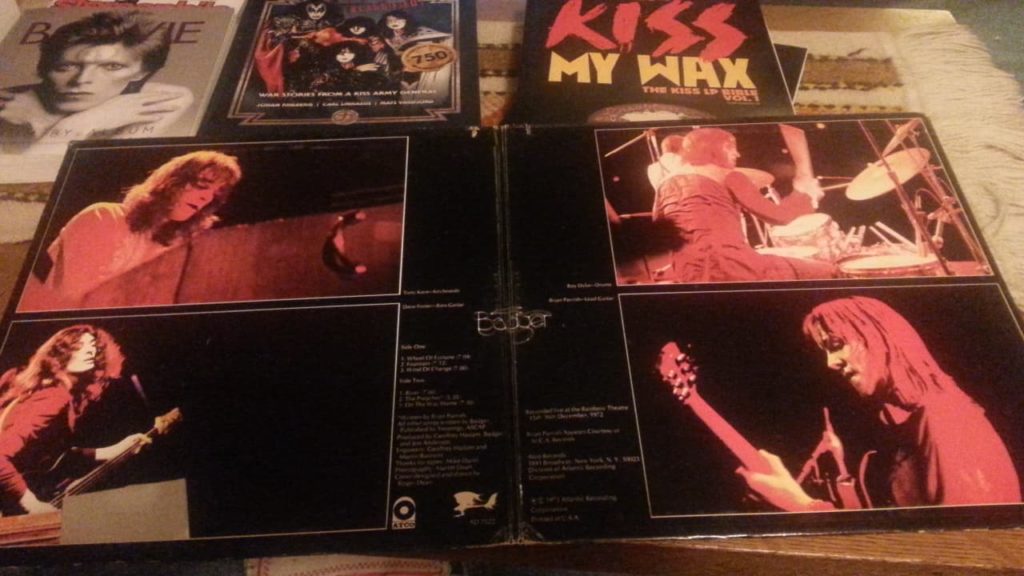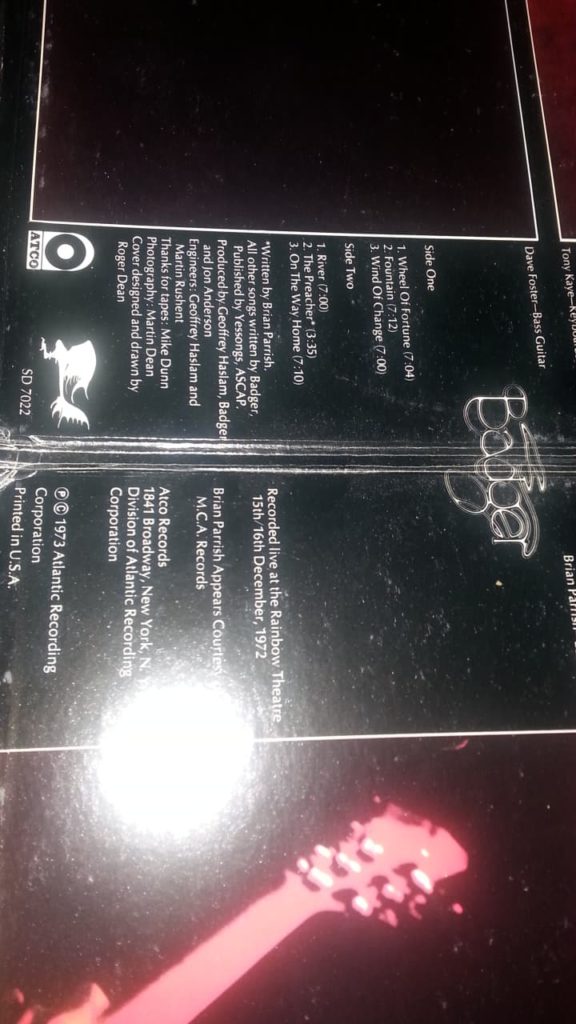Podcast: Play in new window | Download
Subscribe: Apple Podcasts | Spotify | RSS

Produced by Jeffrey Crecelius, Wayne Hall, Preston Frazier, Bill Govier and VR Hoisington
This week we complete our two-part episode on the second musician to leave Yes, Tony Kaye. Mark and I listen to the One Live Badger album and share our thoughts.
Listen and let us know what you think!
- What’s the overall feel of this album?
- Does Tony Kaye play the same part as he did in Yes?
- How does it stand up as the first official album from Badger?
If you would like to support the Yes Music Podcast financially and also have access to exclusive activity and opportunities, there is a special page you can use to sign up and 2019 is the time to join us:
Become a Patron!
Show notes and links
Mark’s photos:
YMP Patrons:
Producers:
- Jeffrey Crecelius
- Preston Frazier
- VR Hoisington
- Bill Govier and
- Wayne Hall
Patrons:
| Aaron Steelman | Dave Owen |
| Mark James Lang | Paul Tomei |
| Joost Maglev | David Heyden |
| Martin Kjellberg | Paul Wilson |
| Bob Martilotta | Lind |
| Michael O’Connor | Peter Hearnden |
| Brian Sullivan | David Pannell |
| Miguel Falcão | Lobate Scarp |
| Chris Bandini | David Watkinson |
| Neal Kaforey | Rachel Hadaway |
| Craig Estenes | Dem |
| Paul Hailes | Mark ‘Zarkol’ Baggs |
| Doug Curran | Robert Nasir |
| Fergus Cubbage | Scott Colombo |
| Fred Barringer | Scott Smith |
| Geoff Bailie | Simon Barrow |
| Geoffrey Mason | Stephen Lambe |
| Guy R DeRome | Steve Dill |
| Henrik Antonsson | Steve Perry |
| Hogne Bø Pettersen | Steve Rode |
| IanNB | Steve Scott |
| Jamie McQuinn | Steven Roehr |
| Ken Fuller | Terence Sadler |
| Jeremy North | Tim Stannard |
| Jim | Todd Dudley |
| John Cowan | Tony Handley |
| John Holden | Joseph Cottrell |
| John Parry | Keith Hoisington |
| John Thomson | William Hayes |
| Barry Gorsky |
Robert and David
Please subscribe!
If you are still listening to the podcast on the website, please consider subscribing so you don’t risk missing anything:


Subscribe with RSSSubscribe on Android
Listen on Stitcher
Theme music
The music I use is the last movement of Stravinsky’s Firebird Suite. This has been used as introduction music at many Yes concerts. My theme music is not take from a live concert – I put it together from the following two creative commons sources: thanvannispen and archive.org






8 replies on “What did they do next? Part 2b – Tony Kaye – 384”
Kevin and Mark, you guys are probably too young to remember, but at the time this Badger album was released Religious and even explicitly Christian themes were very common in popular music. Here in the States, particularly on the West Coast, the early 70s was the zenith of the ‘Jesus Movement’, (google it) a large part of which involved incorporating Christianity into rock music. A lot of the music that came out of that trend was really good. A couple examples of hits that come to mind are Jesus is Just Alright from the Doobie Brothers and Spirit in the Sky by ..?? Spirituality in general in pop music was very popular , think of for instance George Harrison’s My Sweet Lord. I think that by 1975, that trend had pretty much faded away, along with our beloved Progressive Rock.
Hello!
The iconic gospel-rock tune “Spirit in the Sky” was by Norman Greenbaum. As noteworthy as its Christian theme was the sound of its gritty, bluesy guitar riff which Greenbaum played on a Fender telecaster that he had personally modified to get the sound (the guitar is now on display at the Smithsonian). Ironically, Greenbaum professed to being a Jew and said that he wrote the song to “cash in” on the “Jesus music” trend.
The support thing is interesting as my recollection of the early to mid 70s was that concert bills were very mixed affairs. That reflected the fact that music magazines were generally not concerned with specific genre ghettos. Prior to NWOBHM Melody Maker, NME, Sounds wrote broadly about almost everything that was pop and rock (and beyond in the case of MM). Emmylou Harris, Sabbath and Van der Graaf Generator and Dr Feelgood could all appear in the same edition and no one would think there was anything odd about that.
There were Blues & Soul and Echoes magazines for Soul & Reggae fans (one of which may have also been called Black Music) and the specialist Jazz mags of course but all those genres got covered in a lot of the Rock press too if in less detail.
The QPR and Stoke bills are good indicators of that dynamic – Gryphon (medieval rock), Seals and Crofts (horrible bland AOR, I would say “god awful” but they were also Christian rockers I believe which touches on another of this week’s themes), Ace (Pub Rock with a touch of what was known at the time as Blue-Eyed Soul), Sensational Alex Harvey Band (theatrical, confrontational, political, progressive musically in that there was complexity but more like Brecht & Weill than your run of the mill rock band). I saw Donovan open for the band in 77 (definitely not Prog) and Richie Havens open for Genesis around the same time. IIRC John Martyn and Danny Thompson opened for Yes in America in the late 70s. That’s was double bass and acoustic guitar duo! John could be very progressive but he was a singer songwriter and no one would call his occasionally experimental folk Prog Rock. So nothing formulaic about any of that. Even as late as 1978 I remember seeing West Coast hippie geniuses Spirit with Agit Punk band Alternative TV and The Police on the same bill.
Back then we talked about “progressive” music but not Prog. The term Metal got used a bit but not to the same degree. It was just all Rock to us and most people bought their albums broadly across the whole spectrum. It was all just music to us.
PS don’t forget that U2, the biggest band in the world for most of the 80s, were “out” Christians. It can’t have been that unfashionable. Dylan had a hard time for his string of Christian albums (all of which are brilliant btw) but that was more about the fact that he threw most of his old material away at the same time so the shows became more like born again meetings. The problem with most Christian Rock I have heard is that they are very much message first, music second. The music is a vehicle to sell an idea to young people not music in its own right. A generalisation but one that holds up.
PPS anyone who likes the live Badger album could do worse than check out Traffic’s On The Road album. The usual core of Brits (sans Dave Mason) supported by a team of crack Muscle Shoals session guys. That has the same British meets Southern feel. Long jams. Great playing, especially some of Steve Winwood’s lead guitar work.
Hi IanNB,
I enjoyed reading your post, and you’re spot-on about the diversity and – for lack of a better word – tolerance of the early 70’s music scene. Just a note of clarification: Seals and Crofts were BaHa’i devotees (I think I spelled that right) and would often evangelize for their faith after their concerts.
Cheers Cliff. Good catch. I only remember their anti abortion stance and that unborn foetus album cover. The details of their faith were pure guess work on my part.
As for Badger I’ve never even heard of White Lady (any good?) though I do have Jackie Lomax’s fantastic cover of Tim Buckley’s “Devil Eyes”. Lomax was to me one of those inexplicably unsuccessful artists like Terry Reid and Nick Drake. How culturally rich we were back then and how we took it all for granted!
Hey Ian. “Any good” is always going to be a matter of opinion. I think anyone who really liked Badger’s first album and was looking forward to more of the same would invariably be disappointed in “White Lady.” It’s not bad; it’s just too different from their first effort to compare. Lomax was, as far as I can tell, an excellent frontman and Badger backed him well. But imagine if, after The Yes Album, Anderson et al had made an album that sounded like Sam & Dave or the Righteous Brothers: it was just too different.
With all the discussion of “One Live Badger,” I am curious as to whether we will be talking about Badger’s second album, “White Lady.” If memory serves me, only Kaye remained from the first lineup, and Badger seemed to be acting as a back-up band for British blue-eyed soul singer Jackie Lomax, who kind of resembled Steve Winwood (both physically and vocally).
After listening to the episode I was looking forward to hearing this album, but I have to say I was very disappointed. It sounds like every mediocre blues-based early 70s rock band, with every cliche turned up to 10. Not good. Oh well, it was interesting to hear what Tony Kaye did next.